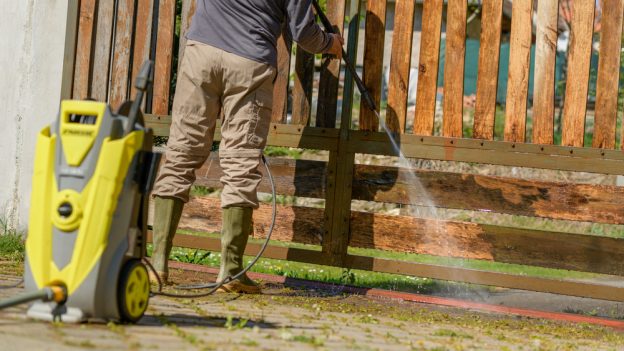In our previous blogs, we have extensively discussed the different occasions you might use your trusted pressure washer as well as detailing the various types of washers you can obtain. However, one thing we do not talk as much of; is the general ins and outs of how a pressure washer works.
While we could very quickly delve into the necessary jargon, other technical lingo and the general detailed intricacies of the various mechanisms; we will try to keep things as simple as possible.
So if you have been using one of our industrial pressure washers in Staffordshire (or anywhere else for that matter) and you have always wondered how they actually work, then you are in luck. Let’s take a look at just how pressure washers work.
Parts And Equipment
When you think of the numerous components contained in the pressure washer, you might think that there are technical and hard to remember names being allocated to the parts. But you will be pleased to learn that washer parts are not as overly sophisticated as you might at first think.
To put it plainly, the water pump which squirts the water out of the hose is powered by an electric motor. The washer takes in ordinary water from the faucet and then the pump accelerates the water through the washer which makes it squirt out of the end of the hose.
Some of the main parts of the pressure washer include:
- Cleaning Attachment- largely dependent on what you are cleaning. You can rotate between a simpler trigger gun, a spinning wand spray or a revolving brush.
- Water Pump- the metaphorical beating heart of the pressure washer. The washer pumps water through the rest of the mechanisms.
- High Pressure Hose- The tube that runs from the washer to the cleaning attachment. The high pressure hose also enables the water to come out at a high pressure.
- Water Inlet- A hose that connects the washer to the primary water supply.
- Electric Motor Or Gas Engine- depending on your exact model, you will have a gas or electric engine.
How They Actually Work
Now we have all of the necessary equipment; we can look at just how the moving parts work. We will break down the general working process into various steps to make the information more digestible and easier to understand.
Step 1- The relevant detergent flows into the container or bottle from one hose. Once this achieved you can move to the next step.
Step 2- Then cold water can pass through the faucet directly from the tap.
Step 3- Simply; ensure a diesel engine or electric powered motor powers the engine of the washer. This step is pretty pivotal.
Step 4- Then a water impeller (or water pump to use a more common term) draws in the detergent and water. The impeller should then mix these two together.
Step 5- Water is then heated to between 50-70 degrees Celsius.
Step 6- Finally the water pump pushes out the freshly prepared hot soapy water at very high pressure. The secure and narrow nozzle helps the pressure of the washer increase.
Step 7- You can now use your pressure washer as much as you like.
Contact Us
If you have any other questions regarding industrial pressure washers in Staffordshire in surrounding areas or if you considering hiring a commercial vacuum in Stoke; then please do not hesitate to contact us.

